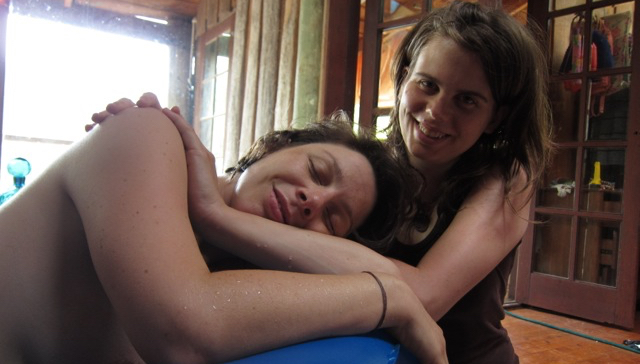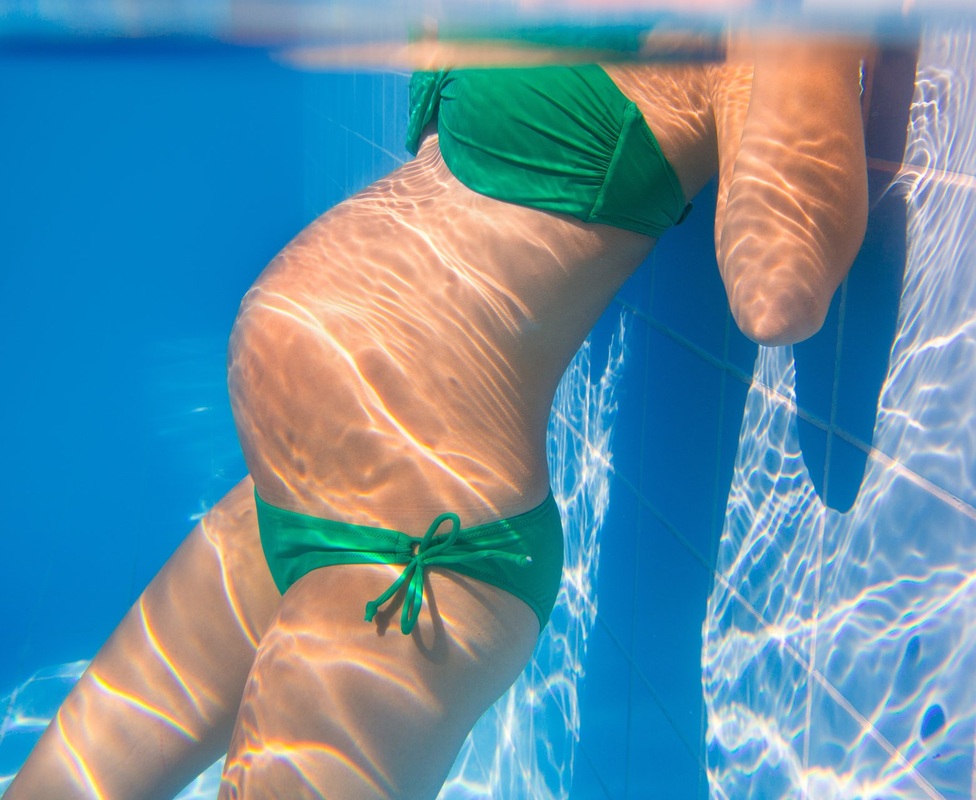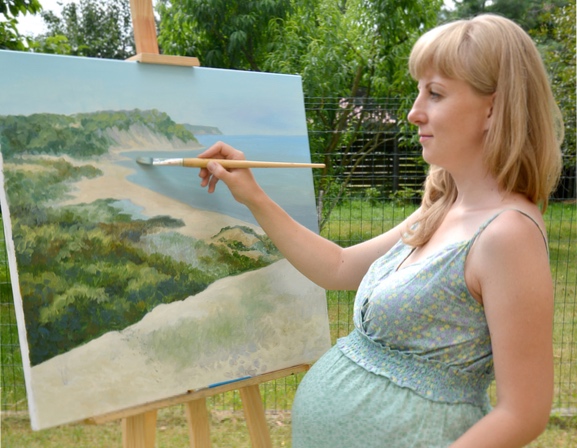Facts about water birth
Waterbirth can be a wonderful option for labour and birth. If it something that interests you, make sure your midwife or obstetrician is comfortable to support a waterbirth. Some midwives have birth pools you can borrow or you can always hire or buy your own pool.
How does it help?
Most people find warm water to be very relaxing. It can help reduce the intensity of sensations during birth. For many women, being in the water feels more private and they can feel like they are ‘in their own world’. Changing positions is easier as the water provides extra support and helps you feel lighter. Many women like to be leaning forward with contractions and then can relax on their back or side between contractions. You may find it is easier to get into a squat or hands and knees. If your partner is in the pool with you, you can lean back and be supported. Being immersed in water can also help the perineal tissues to soften and may reduce the risk of tearing when birthing your baby.
What are the logistics?
You need a place big enough for a birth pool to fit and to have access to clean water. The ideal temperature to have the water is around 37C (body temperature). Sometimes getting into a pool or bath can slow or stop contractions so it’s a good idea to wait until you really need it. When contractions are strong and regular (active labour) and you feel that you want to try the water, then use it as a reward and get into the pool.
What about the baby?
The baby can be safely born into the water. He or she continues to receive oxygen from the placenta after birth. When your babys’ face comes into contact with the air this is when they take their first breath. Many babies that are born into water appear very calm.
How does it help?
Most people find warm water to be very relaxing. It can help reduce the intensity of sensations during birth. For many women, being in the water feels more private and they can feel like they are ‘in their own world’. Changing positions is easier as the water provides extra support and helps you feel lighter. Many women like to be leaning forward with contractions and then can relax on their back or side between contractions. You may find it is easier to get into a squat or hands and knees. If your partner is in the pool with you, you can lean back and be supported. Being immersed in water can also help the perineal tissues to soften and may reduce the risk of tearing when birthing your baby.
What are the logistics?
You need a place big enough for a birth pool to fit and to have access to clean water. The ideal temperature to have the water is around 37C (body temperature). Sometimes getting into a pool or bath can slow or stop contractions so it’s a good idea to wait until you really need it. When contractions are strong and regular (active labour) and you feel that you want to try the water, then use it as a reward and get into the pool.
What about the baby?
The baby can be safely born into the water. He or she continues to receive oxygen from the placenta after birth. When your babys’ face comes into contact with the air this is when they take their first breath. Many babies that are born into water appear very calm.
Nurture your pregnant body by swimming!
With the warmer weather upon us, it’s the perfect opportunity to go for a regular swim. Swimming during pregnancy is one of the safest forms of exercise and has many benefits. Being immersed in water helps support your growing belly and can be very relieving. Pregnant women are generally hotter than the rest of the population, so on these summery days, being immersed in water helps cool the body down. Swimming helps build endurance, increase muscle tone, ease aches and pains and improve circulation.
With the warmer weather upon us, it’s the perfect opportunity to go for a regular swim. Swimming during pregnancy is one of the safest forms of exercise and has many benefits. Being immersed in water helps support your growing belly and can be very relieving. Pregnant women are generally hotter than the rest of the population, so on these summery days, being immersed in water helps cool the body down. Swimming helps build endurance, increase muscle tone, ease aches and pains and improve circulation.
Nurture your pregnant soul by exploring birth through art!
Get creative and make some art during your pregnancy. It can help you access your intuition, help you express yourself in a different way, it can reveal something new and it reminds you that you are unique.
Making birth art is about the process, not the finished product!
I encourage you to explore labour as a landscape (a Birthing From Within activity). This allows you to visualise labour for YOU, rather than what a book says it will be like. So instead of thinking of labour as a physiological process in your body, start to imagine labour as a landscape.
What is the geographical terrain (mountains, valleys, forests, rivers or a desert)? What is the season (summer, winter, autumn, spring)? What is the weather (windy, rainy, sunny)? Who is with you?
Make time to quieten your mind before making art. When you are ready draw your journey through the landscape of labour. Pastels are a wonderful tool to make your art.
Afterwards, it’s a good idea to journal about your experience. Some prompt questions for you to ask yourself are; How am I feeling now? How was I feeling when making the drawing? Is there a story/time/place to this drawing? Was anything surprising? Is there anything that doesn’t make sense? Is there anything I’d like to do now as a result of making this drawing?
Get creative and make some art during your pregnancy. It can help you access your intuition, help you express yourself in a different way, it can reveal something new and it reminds you that you are unique.
Making birth art is about the process, not the finished product!
I encourage you to explore labour as a landscape (a Birthing From Within activity). This allows you to visualise labour for YOU, rather than what a book says it will be like. So instead of thinking of labour as a physiological process in your body, start to imagine labour as a landscape.
What is the geographical terrain (mountains, valleys, forests, rivers or a desert)? What is the season (summer, winter, autumn, spring)? What is the weather (windy, rainy, sunny)? Who is with you?
Make time to quieten your mind before making art. When you are ready draw your journey through the landscape of labour. Pastels are a wonderful tool to make your art.
Afterwards, it’s a good idea to journal about your experience. Some prompt questions for you to ask yourself are; How am I feeling now? How was I feeling when making the drawing? Is there a story/time/place to this drawing? Was anything surprising? Is there anything that doesn’t make sense? Is there anything I’d like to do now as a result of making this drawing?




 RSS Feed
RSS Feed
